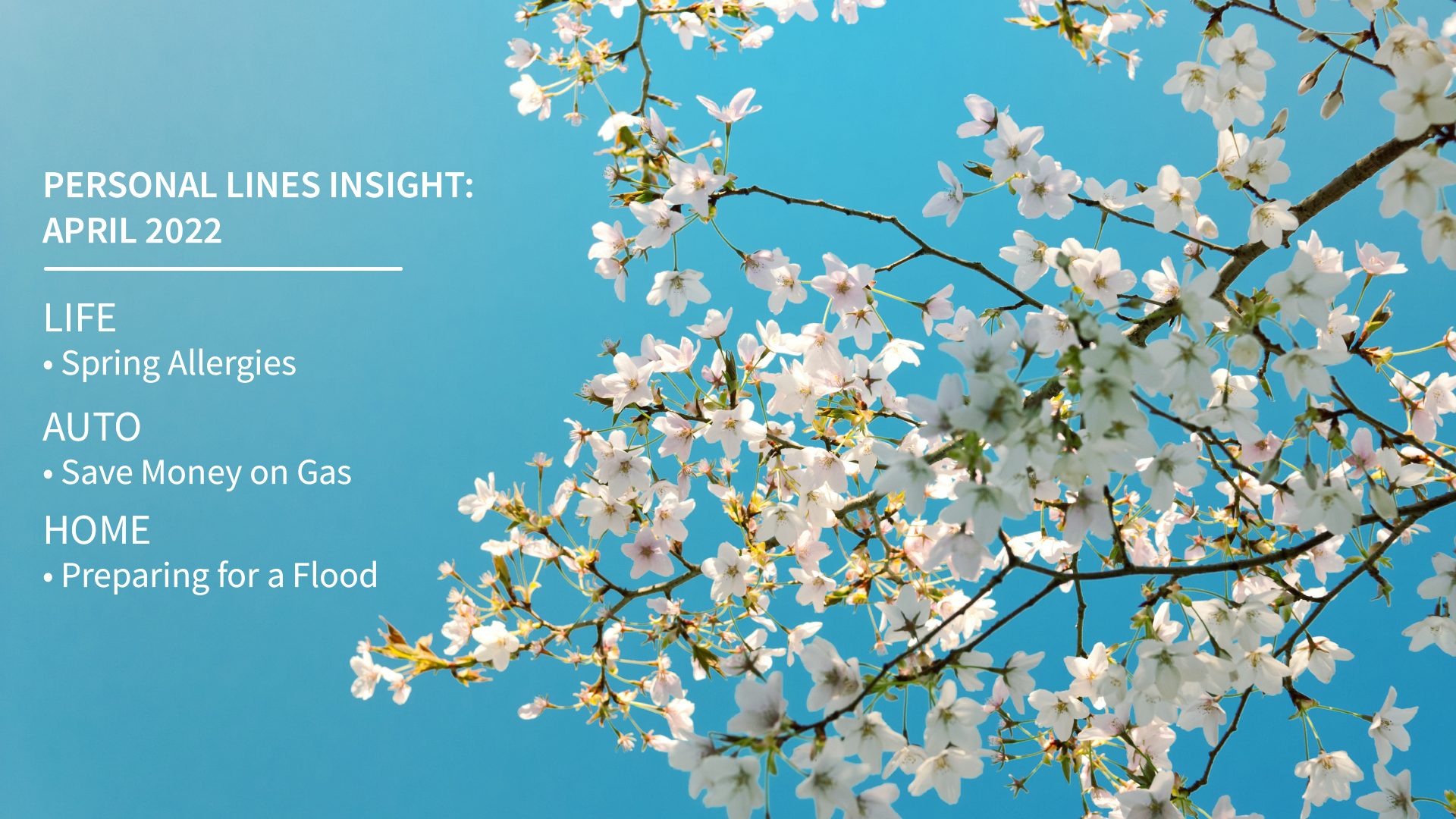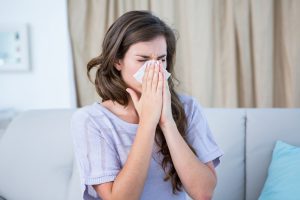
Personal Lines Insight: April 2022
April 4, 2022
Life
Spring Allergy Alleviation Tips
About 20 to 25 per cent of Canadians are affected by hay fever, also known as allergic rhinitis, according to the Canadian Allergy, Asthma and Immunology Foundation.  Hay fever can cause cold-like symptoms, including congestion, sneezing, runny nose, itchy eyes and sinus pressure.
Hay fever can cause cold-like symptoms, including congestion, sneezing, runny nose, itchy eyes and sinus pressure.
Pollen—an airborne allergen—is the cause of spring allergies for many and can exacerbate hay fever symptoms. During the spring, pollen concentrations rise due to new flowers and plants in bloom. Although pollen counts are higher in the warmer seasons, you can learn how to mitigate your allergies with some helpful tips instead of avoiding the warm weather.
What Can You Do?
The first step in helping alleviate your seasonal allergies is to take the proper steps to protect yourself. Consider the following tips to help protect yourself against pollen:
- Check pollen forecasts and plan to spend less time outdoors when pollen levels are high.
- Take your allergy medications as prescribed by your health care provider.
- Avoid touching your eyes while and after being outside.
- Shower after being outside.
- Change your clothes after being outdoors.
- Keep windows closed during the pollen season.
- Use high-efficiency filters in your home’s heating, ventilating and air conditioning (HVAC) system.
Auto
Tips for Saving on Gas
 Spending money on gas is inevitable when you drive a vehicle. Although it’s hard to avoid spending money on gas, there are ways you can save the amount you’re spending. To start saving, practise the following gas-saving driving tips:
Spending money on gas is inevitable when you drive a vehicle. Although it’s hard to avoid spending money on gas, there are ways you can save the amount you’re spending. To start saving, practise the following gas-saving driving tips:
- Avoid high speeds. As speed increases, so does aerodynamic drag, which can use cause more use of gas.
- Keep your tires properly inflated. Keeping air pressure at maintained levels can improve your fuel efficiency.
- Cut down on air conditioning use and keep windows closed. Air conditioning puts an extra load on the engine and uses more fuel. Keeping windows closed will help reduce drag.
- Control how you accelerate and brake. Applying slow and steady acceleration and braking can increase your fuel economy.
- Get your car serviced regularly. Routine maintenance can help your car more efficiently and help you avoid issues that can increase your vehicle’s fuel consumption.
By taking the time to practise gas-saving tips, you can help save yourself money bit by bit over time.
Home
How to Be Properly Prepared for a Flood
 Spring brings warm weather, which means a greater occurrence of heavy rain and melting snow. These factors increase the likelihood of flooding. Although there is no way to prevent flooding outdoors, there are ways you can stay safe and help protect your property through the following safety tips:
Spring brings warm weather, which means a greater occurrence of heavy rain and melting snow. These factors increase the likelihood of flooding. Although there is no way to prevent flooding outdoors, there are ways you can stay safe and help protect your property through the following safety tips:
- Purchase flood insurance. Determine whether flood insurance is a good option for your home. Your homeowners policy typically won’t provide coverage for flooding.
- Pack emergency supplies. Water, food, medication and clothing should all be ready in the event you need to evacuate your home.
- Protect valuable items. Use waterproof storage to keep irreplaceable items and documents safe from water damage,
- Create an evacuation plan. Make sure each member of your home knows what to do in the event of a flood.
No matter the safety precautions in place, a flood could still occur. If you experience a flood, there are few steps you should take after to account for damages and remain safe such as:
- Wear protective clothing. The environment you’re entering could be unpredictable. Be sure to wear protective clothing if you think you may be handling hazardous materials.
- Remove wet contents. Once it is deemed safe to do so, you should remove all wet content from your home, including carpets, furniture and bedding, due to its tendency to mold quickly.
- Throw away all unsafe food and beverages. Any food that has touched the water should be thrown away. Do not drink your tap water until local authorities have deemed it safe to do so.
- Check for damages. If you suspect there is water, gas, electric or sewer damage, contact the proper authorities. File a flood insurance claim. Photograph any water damage and make a detailed list of damaged or lost items to submit to your insurance company.
Suggested Articles:
© 2022 Zywave, Inc. All rights reserved.

